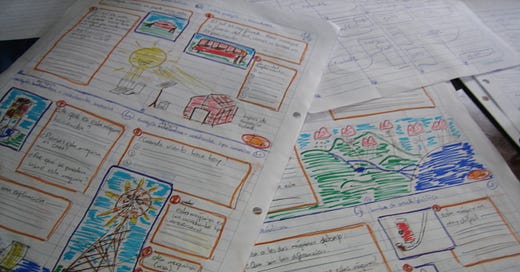Late last year, Joy Clancy delivered her farewell lecture. Professor Clancy was the Chair of Energy and Gender at the University of Twente, a founding member of ENERGIA, the international network on gender and sustainable energy, and a frequent advisor to organisations such as the World Bank and the European Union. Also, for a brief spell in the early 2000s, she was my teacher. What I learned from studying in Joy’s classes, I still try to apply in everything I do.
The essence of this lesson is that regardless of good intentions, engaging in development activities without careful design involving all beneficiaries is likely to exacerbate existing inequalities.
Rich countries such as The Netherlands are currently in the midst of what may be the largest development programmes in decades, possible centuries. We’re spending tens of billions of euros on updating our energy infrastructure, climate adaptation, and upgrading our infrastructure for a carbon-free future. All this money, if thoughtlessly spent, will add to the growing inequality between countries, communities, and people. Joy’s lessons, summarised in her farewell lecture, are more relevant than ever.
What, you may ask, has gender to do with energy and vice versa?
Everything we do uses energy. And everything we do is shaped by our culture and social norms. Gender comes with a lot of social expectations. Who’s supposed to cook a meal? Who can start a business? Who controls the household car?
Gender disparities persist in access to and control over energy resources and technologies. This is true in the global South as much as the ‘developed’ world. Even in the European Union, women are more likely than men to live in households that cannot afford adequate heating or cooling due to energy costs. Women only take up a small percentage of leadership positions within the energy sector.
Gender inequalities also intersect with other forms of social, economic, and cultural disparities, exacerbating the challenges faced by marginalised groups in societies everywhere.
When it comes to the energy transition we’re in right now, this begs the question who is favoured in the transition. Does clean and affordable energy go first and foremost to disadvantaged communities and SMEs, or is priority given to large corporations and EV charging stations? And then, how do these choices affect the equality between people?
The solution, I learned from Joy, is straightforward: work with all intended beneficiaries of an energy development programme. Spend time to reach out to harder to reach individuals. Recognise that every community is different and will have different dimensions of inequality. Then, support the community to find a solution that may reduce the inequality between its members.
People everywhere find this hard. And it’s harder still when the pressures you’re on to deliver a project are paramount. As they are right now when it comes to transitioning to clean energy. If you want to go fast, go alone, etcetera. Yet we may wonder what we’ll lose if we design our future infrastructure (whether its power lines or levees) thoughtlessly.
Which is why it saddened me to watch Joy’s farewell lecture. Her lessons, and the engaging way she shared them, continue to be pivotal for our world moving forward. As her student, I realise that it’s now up to me to continue to put her lessons into practice. And I may not have been doing enough of that, recently. Fortunately, Professor Clancy has had many students and as she points out in her lecture, many of them have been more successful in addressing inequalities through their work.
Professor Clancy also taught me curiosity. When I joined her minor As the world turns, she challenged us to learn everything we could about the world around us. As I wrote before:
our teacher handed out photocopied maps of the world. Then she started asking questions. It started simple enough: Where is Paraguay? Pakistan? Equatorial Guinea? Then it got tougher: Which countries are not democracies? Which are the biggest oil exporters? Which have a female head of state?
I’m not ashamed to say my performance on this test was abysmal, like that of most of my class. That was the point my teacher was trying to make. After the test, the teacher, Joy Clancy, posed a simple question: How can you be a part of the development of the world if you don’t know about the world?
In that sense, Joy taught me to read books; the importance of reading books. There is no greater gift.
Allow me to end on an anecdote. There is one class Joy taught I will never forget. The first time I joined the introductory course of As the world turns, it was taught on Tuesday and Thursday afternoon in four hour blocks. 2-6pm. I remember the timing well, as the fourth or fifth class was on Tuesday 11 September 2001. In the break, we watched the towers burn. After it, I remember Joy said everything we’d learned would be different now. The world had literally turned.
Thanks Professor Clancy!
And thank you all for joining me,
All the best,
Jasper




Jasper, That's a beautiful tribute to a woman who clearly helped shape your career and outlook on the world—not to mention the turns it takes, anticipated and un-. The lessons she points out about participation remind me of a book another social activist friend and former colleague has recently written, which I commend to you and your readers: "Design for Belonging" by Susie Wise, published by Ten Sped Press.